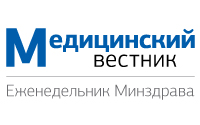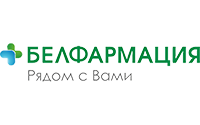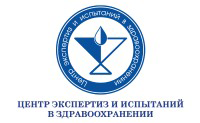
Belarusian clinics and diagnostic centers are equipped with modern equipment that allows specialists to conduct research of any complexity quickly and efficiently. Highly qualified doctors will help you determine if you have health problems and recommend effective treatment.
Computed tomography (CT)
By means of CT, high-quality images of internal organs, bones, joints, and the brain are obtained. The image is formed by X-rays that pass through the body of a person placed in a tomograph.
Advantages of CT:
- the ability to obtain layered images of the organ under study;
- the sensitivity of the tomograph is 10 times higher than that of X-ray equipment, which improves the quality of the images obtained;
- absence of unpleasant sensations in the patient during the examination.
Features of the method: With CT, the radiation dose is several times higher than when performing a conventional X-ray. This diagnostic method is extremely undesirable for pregnant women.
Where can I sign up for a CT scan?
Magnetic resonance imaging (MRI)
MRI allows you to examine the structure and functions of the brain and spinal cord, internal organs, bones, spine, joints, heart and blood vessels. The patient is placed in a strong magnetic field. The equipment receives electromagnetic signals that come from the human body, processes them, removing interference, and based on the data obtained, produces an image ¢ tomogram.
Advantages of MRI:
- absence of X-ray exposure during the examination;
- an accurate and painless method of studying the structure and function of organs and tissues.
Features of the method: MRI has contraindications. Such an examination cannot be carried out if the patient has a pacemaker, artificial heart valves and other implants, artificial joints and metal staples, rods or other structures in the organs and tissues of the body that are activated electronically, magnetically or mechanically.
Where can I sign up for an MRI?
Positron emission tomography (PET)
Today it is the main and most accurate method of early diagnosis of oncological diseases, as well as monitoring the effectiveness of their treatment.
When using PET, information can be obtained at the molecular level. The method allows you to evaluate the work of organs and systems by obtaining a color image that shows the activity of chemical processes in the body. It is known that already at the first stage of tumor formation at the site of its localization, the rate of biochemical reactions changes. This makes it possible to detect cancer cells long before the appearance of structural and functional changes in an organ or tissue.Ā
Advantages of PET:
-
several types of diagnostics are combined in one study, which increases the accuracy of the data obtained;
-
absence of side effects, pain and discomfort;
-
the ability to detect cancer at an early stage (including tumors smaller than 1 cm);
-
assessment of the extent of the tumor;
-
detection of relapses;
-
simultaneous examination of all organs, if necessary;
-
timely cancellation of unnecessary or ineffective medical treatment, surgery based on PET results.
Features of the method: Before the procedure, which takes 30-40 minutes, the patient takes a radiopharmaceutical, which breaks down into non-radioactive components within an hour. The dose of the radiation exposure received in this case is almost the same as when performing computed tomography or X-ray examination. The results of the study will be ready the day after the scan (in some cases later, if more time is needed for the conclusion).
Who is not allowed to undergo PET?
An unambiguous contraindication to the study is a confirmed or suspected pregnancy.
Restrictions to PET are also diabetes mellitus (consultation of the attending physician and preliminary correction of blood glucose levels before scanning is mandatory) and renal insufficiency (the study data may be distorted due to the delay of the radiopharmaceutical in the body).
How to prepare for PET?
The study is conducted strictly on an empty stomach. On the eve, it is allowed to have dinner with kefir, cottage cheese. At the same time, it is necessary to exclude fruits, flour and sweet products, soda. You can drink plain water without restrictions. On the day of the examination, you should wear warm and comfortable clothes without metal parts and take a change of shoes with you.
What studies are recommended to undergo before PET?
It will be easier for the doctor to make a diagnosis if you provide the results of the following diagnostic tests (for the last 3-6 months):
-
X-rays;
-
scintigraphic images;
-
angiography results;
-
ECG (when examining the heart);
-
Ultrasound;
-
CT;
-
MRI.
Where can I sign up for PET?
Molecular genetics
Specialists of the Republican Molecular Genetic Laboratory of Carcinogenesis conduct studies of molecular genetic markers, which helps to determine the hereditary predisposition to the development of tumors.
Research allow us to establish hereditary forms of:
-
breast cancer, ovarian cancer;
-
colon cancer;
-
stomach cancer.
Where else is molecular genetic analysis performed?
Coronarography
This study should be carried out in patients suffering from coronary heart disease, especially those who have had a heart attack. The procedure allows you to accurately determine the nature of coronary artery damage and choose the optimal treatment tactics - from percutaneous balloon angioplasty, coronary artery stenting to coronary artery bypass grafting.
Coronarography is performed under local anesthesia. After anesthesia, a puncture of a major arterial artery on the leg or arm is performed. A special introducer tube is inserted into the punctured artery, through which catheters are inserted into the aorta and then into the mouth of the coronary arteries. Through them, a radiopaque substance is injected into the arteries of the heart. It is carried by the blood flow through the coronary vessels, making them visible to the angiograph - a device that displays information on the screen about where, how and how much the heart vessels are affected.
Advantages of coronarography:
-
painlessness of the procedure (there are no pain receptors in the vessels);
-
during the examination, the patient is conscious and can see the drawing of the coronary arteries on the angiograph himself.
Features of the method: Coronary angiography is rare, but still gives complications. After the procedure, the patient's heart rhythm may be disrupted, arterial thrombosis may develop, and an allergy to a contrast agent is also possible. Complications of this kind, however, are always amenable to emergency medical care.
Where can I sign up for a coronarography?
Mammography
Mammography is a screening X-ray method of instrumental diagnosis of breast diseases, including those of a tumor nature.
Mammography is recommended for all women over 40 years of age as an annual preventive examination method. The introduction of the procedure into practice made it possible to reduce breast cancer mortality by 35% among women under 50 years of age.
Where can I sign up for a mammogram?









